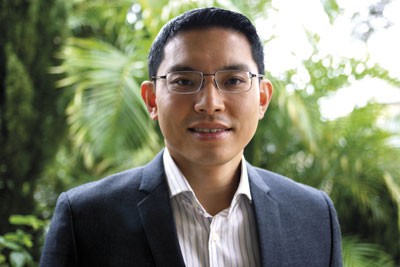ED: The ‘popularity’ of tonsillectomy has changed over time. Today, what factors need careful consideration in children?
Tonsillectomy (with or without adenoidectomy) is one of the most common surgical procedures performed in children under age 16. The two most common indications are obstructive sleep disordered breathing and recurrent tonsillitis. Less common indications include Quinsy (peri tonsillar abscess) and suspicion of malignancy.
Tonsils and adenoids are lymphoepithelial tissues that initiate immune reactions (peak response between age two and ten) to antigens entering the body.
The American Academy of Otolaryngology (AAOHNS) provides evidence based guidance to identify children who will benefit from tonsillectomy for tonsillitis (Paradise criteria).

A child with tonsillitis should have at least seven episodes in one year or five episodes in two consecutive years or three episodes in three or more years to benefit from tonsillectomy.
Children not meeting the above criteria may still qualify for surgery due to other modifying factors that may cause considerable morbidity, including antibiotic allergy/ intolerance, febrile convulsions, growth retardation, poor school performance, enuresis and behaviour issues.
Watchful waiting is suggested for children with fewer episodes than the recommended frequency and no modifying factors.
Obstructive sleep disorder (OSD) symptoms range from simple snoring to apnoea. OSD in children is most commonly due to adenoid and/or tonsillar hypertrophy. Growth retardation, enuresis, behaviour issues and poor school performance may also occur. The presenting symptoms varies with age. Polysomnography is the gold standard for assessing the severity of OSD but is not always necessary. Good history and examination will usually diagnose OSD in an otherwise healthy child.
Considerations for surgery
Tonsillitis is a common presentation to GP’s resulting in antibiotic prescriptions. The costs of GP visits and antibiotic treatment can be substantial and then there are indirect costs, such as time off school and time off work for carers, to be considered.
The decision for tonsillectomy in children should be shared between the child’s ENT Surgeon and parent/ guardian. Surgical criteria, modifying factors, surgical technique, expected outcome and possible complications must be discussed in detail in the informed consent process. Avoid elective tonsillectomy in children under age two or weighing under 12kg.
There are numerous methods for tonsillectomy and/or adenoidectomy. This usually varies according to the surgeon’s preference from cold steel dissection to diathermy to radiofrequency surgery. Children are usually admitted overnight post tonsillectomy. There are multiple co-morbidities associated with surgery, regardless of the technique used – the common issues are throat pain, haemorrhage (primary and secondary), delayed eating and voice changes.
Tonsillectomy in children aims to improve the patient’s quality of life so careful assessment to ensure that benefits outweighs the risks and co-morbidities associated with surgery are mandatory.
Further reading: http://www.aafp.org/afp/2011/0901/p566.html
References available on request.
Questions? Contact the editor.
Author competing interests: nil relevant disclosures.
Disclaimer: Please note, this website is not a substitute for independent professional advice. Nothing contained in this website is intended to be used as medical advice and it is not intended to be used to diagnose, treat, cure or prevent any disease, nor should it be used for therapeutic purposes or as a substitute for your own health professional’s advice. Opinions expressed at this website do not necessarily reflect those of Medical Forum magazine. Medical Forum makes no warranties about any of the content of this website, nor any representations or undertakings about any content of any other website referred to, or accessible, through this website.

